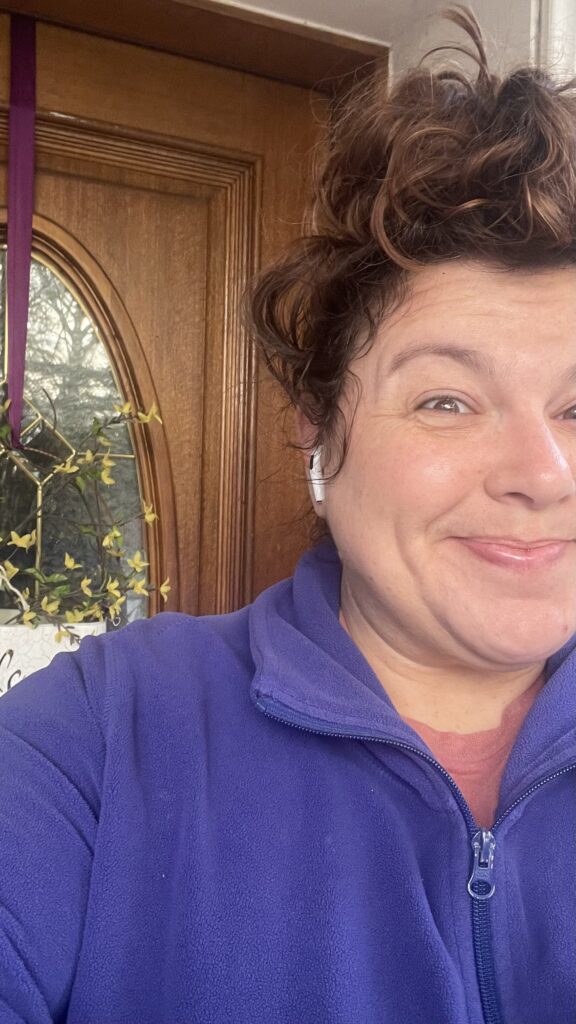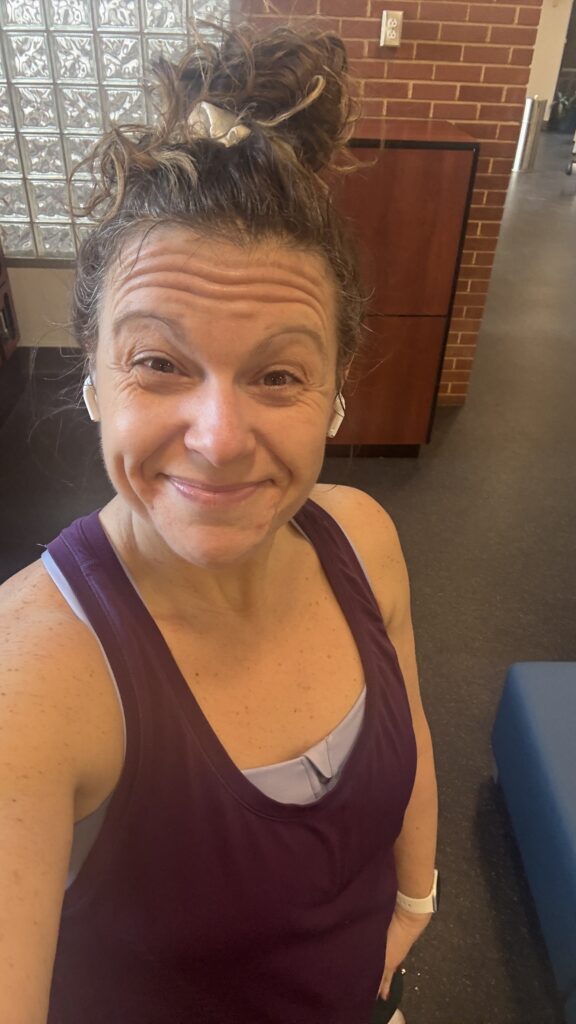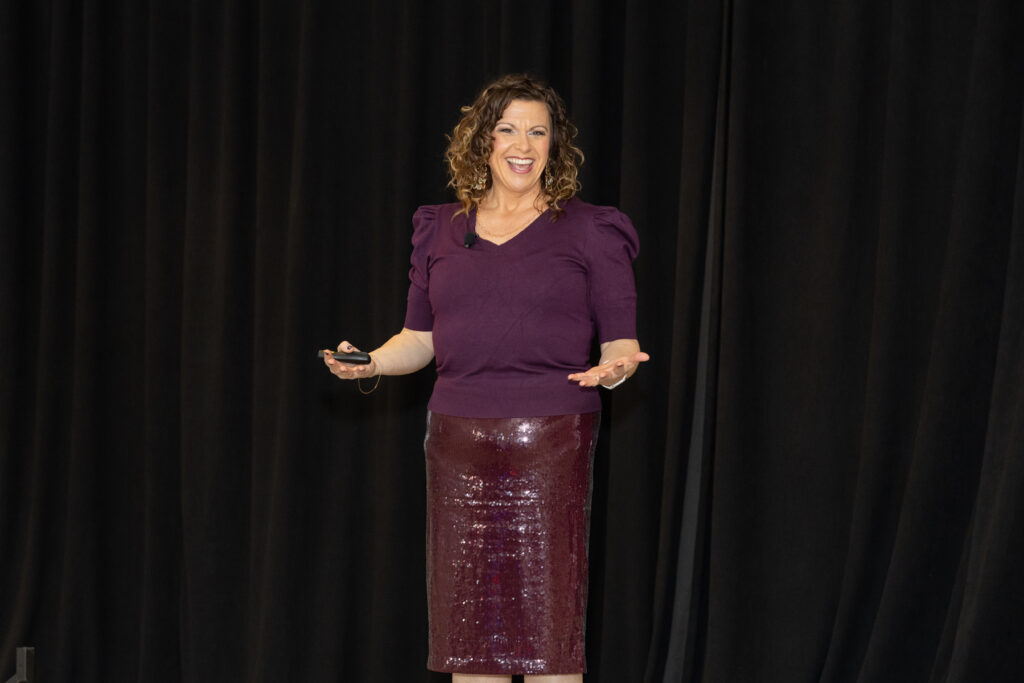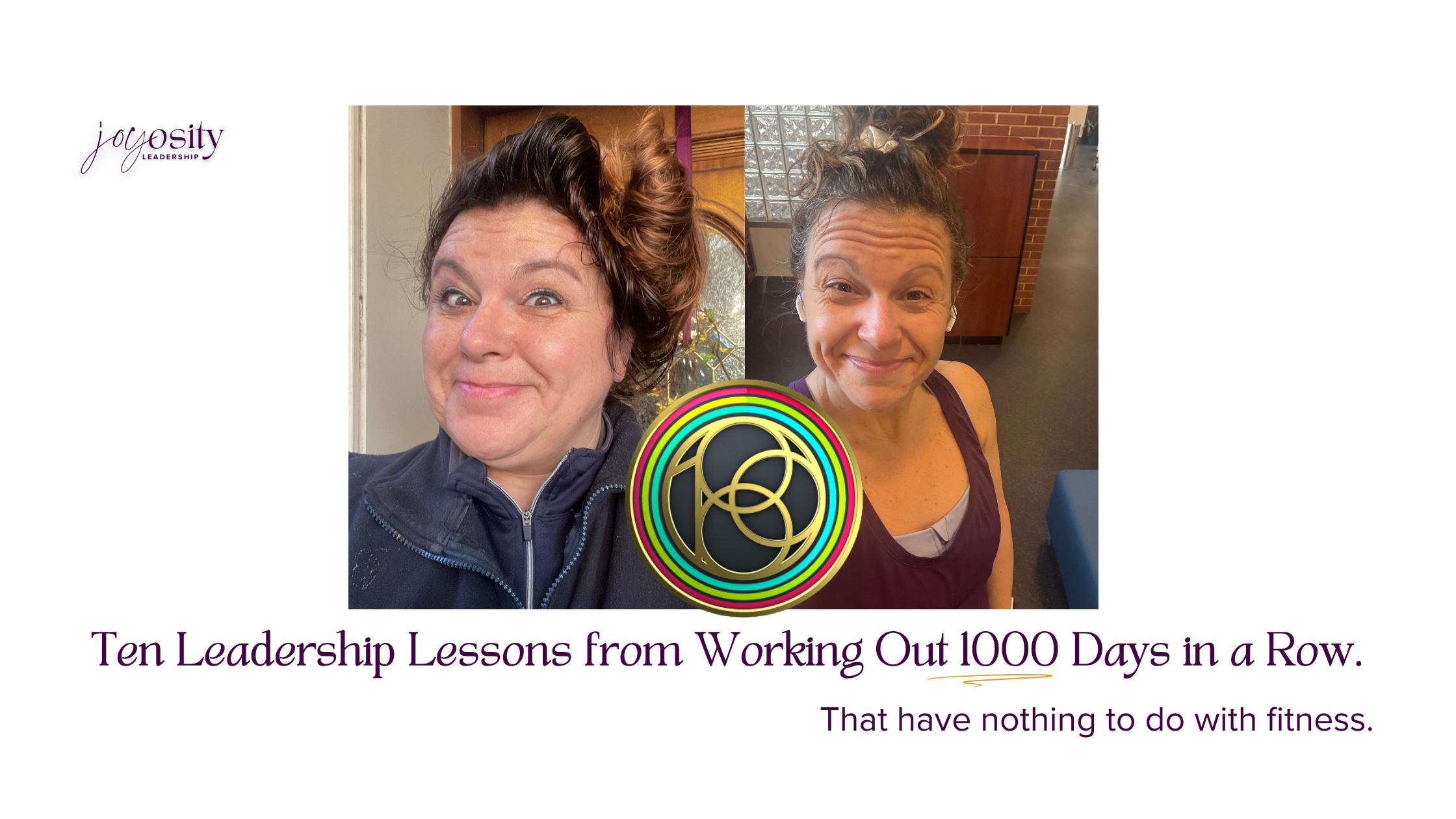I decided on a random Tuesday in January of 2022 that it’s never too late to be the most active participant in my life. I had no idea it would bring leadership lessons, too.

I started walking out the front door every day for a short walk. Based on what felt like fun and play, I added time and activities. In May of 2022, I invested in an Apple Watch. I started a streak of moving at least 30 minutes every day and closing all my rings each day.
Last week, I hit 1000 days in a row.

In Nashville last week, I reflected on the leadership lessons I’ve gained over those 1000 days that have nothing to do with the physical and mental benefits of this streak.
It’s never too late to be the most active participant in your life.
I have a long list, but these 10 feel like the most helpful reminders for you as a leader right now.
- Start with play and fun.
Hard does not equal better. Creating a new habit that starts with HARD is counterproductive. I mean I grew up with an immigrant family work ethic. I watched hard work as restaurant owners, janitors, bus drivers, power plant workers, and more. If you’re starting something new, “follow the fun” as Annie F. Downs says. When I’d walk through the gym doors, I picked what felt like fun that day. Often, it was the only time I could watch TV, so I’d pick a cardio machine and Netflix! But that evolved as I learned more and honed in on what felt the most like play.
What feels like play for you at work? Start there. For you and your team. You’ll be so much more consistent and productive. (Want help with that? I’ve got a Play Personality Quiz that helps you find your most productive work that feels like play.) - Habits and rhythms reduce decision fatigue.
I didn’t have to decide if I was going to move my body. Or really even when I was going to move my body. I established a rhythm of weekday mornings and weekend afternoons to head to the gym or around the block. I wasn’t each day trying to fit it in; it was already decided. What I found is I established other rhythms that further reduced my need to decide about daily activities.
Americans make approximately 35,000 choices a day. Leaders make at least an additional 1,500 decisions. Reducing the friction of choices reduces the overwhelm you and your team experience. Create rhythms for you and your team. This doesn’t mean inflexibility. But it does mean not immediately flexing!
For example, you need to have regular 1:1 meetings with your team member. You can schedule that each week, or you can create that in a rhythm, such as Thursdays at 2pm. When someone else asks for a meeting at that time, practice saying, “I can’t at that time. Could you do xyz time?” Especially with clients or bosses we just assume we need to bend to their convenience. This creates an unhealthy dynamic and adds to your decisions. Stick with your rhythms and reduce decision fatigue. - Consistency doesn’t mean the same effort every day.
Some days I did intense strength training for 30-40 minutes. On other days, I walked my neighborhood at a leisurely pace. The effort required to do Apple+ fitness coach Kyle’s crazy leg workout was significantly more than an unhurried stroll around the block a few times. It’s just as unhealthy for my muscles for excess exertion every single day as it is for you and your team to give 110% every day. (And don’t get me started on how that’s not actually possible!) It’s the consistency of activity, rest, and recovery that brings change.
There should be space for slow-paced days as much as there are bursts of activity. Look at your quarter, then month, week, and day. Are there intentional periods of less activity? Do you need to reset expectations and deadlines? Do you need more daily short breaks to reset? How can you show up consistently without seeing yourself or others as “lazy” if some days have less activity than others?
- Community and support make or break your success.
I know my Apple watch is not a human (even though she talks to me a lot!), but she is part of the “equipment suite” that supported changes. I also needed systems and people. My family supports me (and often came with me!), random women at the gym, as well as some medical professionals. I’m 100% positive I would have given up without the right support. The principle is this: you share the goal and then work with the tools and people to support that goal.
You need support as a leader, but do you and your team have the right support? Do you need a retreat to reset and work on your leadership with peers? Do you need accountability from a coach? Do you need more resources from your organization? Do you need a regular priority check-in? What tools do you need so you lower obstacles and increase success?
The John Wayne/Lone Ranger American myth is an unhelpful leadership model. You need support, and so do your people. Support doesn’t make you weak. Support literally creates a solid foundation so you can do your best work. - Get the right tools for right now.
I used the same New Balance tennis shoes for years. I loved them! But as I started changing how I worked out, I noticed I was struggling with certain activities. So I went to an actual athletic shoe store and — gasp — talked to a salesperson. I described what I was doing, how I felt while doing it, and how I wanted to feel. We found two or three different shoes to try, and I ended up with a pair of On Clouns that solved the issue. I was so much more stable and productive.
One of the worst excuses a leader can give is, “That’s what we’ve always used.” I’m not for changing just to change to the latest tiny thing, but ask yourself what I call the Dr. Phil question: “How’s that working for you?” If it’s not working, especially if you’re trying to bend over backwards to use the tool, it’s time to explore something new. That may be how you set up your calendar. Or the way your desktop is organized. It could be a tool your broader team uses. The tool serves you and your purpose, not the other way around. - Motivation will always fail you. You need a system.
Your gumption won’t get you through. In addition to rhythms and habits, you need a connected system that puts it all together. For me, I hate tracking. It just feels like extra work. I already did the thing, why do I need to write it down?! So, my system was using as much passive tracking as I could. My watch would automatically record workouts from Apple Fitness. What else could I connect it to? Anything I could automate and create a system around, I did.
Jenny Blake talks about this all the time. She reminds us that if you do it more than three times, figure out a way to automate it. As a leader, how can you automate? What can create a process around (much like the standing meetings from number two), but what doesn’t have to be you? Delegate to a human or technology. Can you batch a set of thank you emails and schedule them? Can you use an automated tool to check in on your team? Joy Beth Smith reminds us that intentional love is just as valuable as spontaneous love. You’ll lose steam at some point. Create a system to carry you. - A streak cultivates responsibility.
I’m not really afraid of failure, but I really hate disappointment. And breaking a streak plays into the fear in a good way. Over time, my fear of disappointment (and the dopamine hit of seeing those three circles with confetti at the end of each day) turned into responsibility. I’m responsible for my own health. Which means I have to own taking care of me. While the gamification is real, it’s now part of my character.
How can you develop that at work? What is yours to do? How can you gamify it? I know it feels cheesy, but truly, there is psychological power in a streak. - You are a reservoir that culture flows from.
I can’t give what I don’t have. You’ve heard the sayings, “You can’t pour from an empty cup” or “But your own oxygen mask on first.” So, as I developed the responsibility to care for my own self, I began to experience that I had more to give others. Not just the physical energy, but mentally, creatively, and emotionally. I not only modeled what I wanted others to experience, but I could literally give more joy because I experienced more joy.
As a leader, if you are a dry, crusty expanse of desert, that is what you give to your team. Not because you want that, but that’s because that’s all you have. And your team will think that’s what’s expected (even if you tell them differently. You know, actions louder…). If you are a full reservoir of fresh water, that is what you will share with your team. So, my question for you: What flows out of you? - It’s hard to overfunction when you care for yourself.
When I started adding time to my daily workouts, I had to stop doing some activities that I was doing for other people. Because, believe it or not, I do not have Hermione’s Time Turner! And what I realized is other people started to step up. When I overfunctioned, I robbed others of opportunities for their own growth. And turns out, sometimes they’re better than I am!
Parents, I think this pressure comes down hard for you. I promise, your kids can do laundry. They can message their teachers. They can unload dishwashers and even find their own rides to events.
And at work, you’ve got people on your team who want to show what they can do. Release overfunctioning, and let others grow too. - My favorite self develops when I do what I want for her, not what I feel like in the moment.
There are many days I sat in my car WAY too long before going into the gym. (If you follow me on Instagram, you’ll see it still happens too often!) I had to remind myself that tomorrow’s Jenn is more joyful and more productive when today’s Jenn does the work. There are days when not one bit of the workout felt fun, and the endorphins don’t really show up, either. Yet, not one time have I regretted a workout. Ever. And even in the midst of the incredibly nonlinear path of growth, I could see the favorite version of myself showing up more and more.
As a leader, you won’t ever arrive. Not after my TEDx, keynoting at the U.S. State Department, or Chick-fil-A’s conference…I’ve not arrived in my career. But more and more, my favorite leadership self appears. As I’m writing my book coming out this fall, I’m remind myself of this. I won’t have arrived once I’m published author. But more and more of my favorite self appears.

With my leadership coach hat on, can I ask you some questions? (Yes? Great!)
Which one of these is the hardest for you to believe?
Which one bubbles up with reasons why that won’t work?
Which one brings up stories about your worth as a leader?
Which one feels like the reminder you needed today?
Which one feels like it will bring you the most joy?
Comment and let me know. And if we go one step further… after reading this, what’s the one next step you’ll take toward being a healthier leader?
Hi, I’m Jenn Whitmer! I helps leaders, teams, and organizations with Joyosity™ — creating positive culture with complex people. Through solving conflict, cultivating communication, and capitalizing on the uniqueness of each person, I help you be a better leader and create empowered teams. As an international keynote speaker, consultant, podcast host, Enneagram specialist, and joy-bringer, I help organizations retain employees, increase efficiency, and develop healthy culture so that work is a joy, people are whole, and organizations flourish. (Usually, that means a lot of laughter!)

Want to talk about helping your team? Let’s do it!

COMMENTs:
0